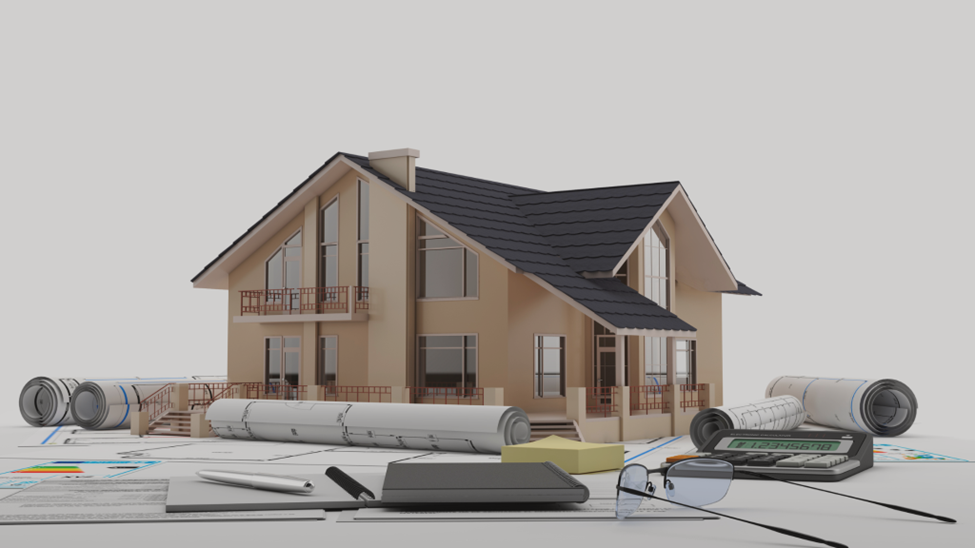Durability and Performance: Selecting the Right Materials for Industrial and Commercial Projects
- Structures Insider

- Dec 6, 2023
- 4 min read
Updated: Dec 3, 2024

In the ever-evolving realm of industrial and commercial construction, architects, engineers, and project managers grapple with the challenge of creating enduring structures through the meticulous selection of materials. The task involves achieving a harmonious blend of visual appeal, functionality, and the capacity to withstand challenging conditions. Materials with extended lifespans reduce the need for frequent maintenance, resulting in significant cost savings over time.
Ensuring structural integrity and compliance with building regulations enhances occupant safety and mitigates legal complications. The use of high-performance materials aligns with energy efficiency goals and sustainability objectives, reducing environmental impact. In environments exposed to industrial settings, resilience to harsh conditions is indispensable.
Prioritizing durability and performance not only enhances economic efficiency but also ensures compliance with safety standards and minimizes environmental impacts. This comprehensive approach contributes significantly to the overall success and sustainability of industrial and commercial projects, aligning with contemporary standards and responsible practices.
ACM Panel Systems: Versatile Design and Structural Durability
The rising favor of acm panels systems persists because they skillfully merge aesthetic flexibility with dependable structure. Comprising two aluminum sheets adhered to a non-aluminum core, ACM panels offer a lightweight option while maintaining durability. Their impressive strength is evident in their resistance against corrosion, weathering, and UV rays, rendering them ideal for outdoor use. Beyond enhancing structural longevity, these panels empower architects to realize contemporary and streamlined designs.
Spray Foam Insulation: Airtight Efficiency and Structural Reinforcement
Effective insulation is crucial for sustainable construction methods, particularly in the context of spray foam insulation metal building. Spray foam insulation, renowned for its ability to create a seamless and airtight barrier, stands out as a material that not only enhances energy efficiency but also fortifies the structural robustness of metal constructions.
By tightly adhering to surfaces and adeptly filling gaps that traditional insulation might overlook, spray foam plays a vital role in improving both thermal efficiency and structural integrity in metal buildings. The rigid composition of spray foam provides additional support, reducing the likelihood of structural issues over time.
Structural Steel: Strength, Versatility, and Adaptability
In the realm of industrial and commercial construction, structural steel stands firm as a cornerstone, celebrated for its outstanding strength, versatility, and adaptability. With an impressive strength-to-weight ratio, steel imparts structural resilience, enabling buildings to endure severe weather, seismic events, and substantial loads.
Beyond its sturdiness, structural steel affords architectural flexibility and creative freedom, facilitating the construction of a variety of structures tailored to specific requirements. The enduring durability of structural steel guarantees the sustained performance of the entire construction over the long term.
High-Performance Glass: Balancing Transparency and Energy Efficiency
Incorporating high-performance glass into industrial and commercial projects introduces a delicate balance between transparency and energy efficiency. Advanced glazing technologies offer improved thermal insulation and UV resistance, contributing to energy savings and occupant comfort. The durability of high-performance glass ensures that it can withstand environmental factors while allowing natural light to infiltrate the space. This material not only enhances the visual appeal of buildings but also positively impacts energy performance.
Volume Control Dampers: Optimizing Airflow for Efficiency and Indoor Comfort
Within the intricate web of industrial and commercial systems, volume control dampers (VCDs) play a pivotal role in optimizing airflow for efficiency and indoor comfort. These dampers, when selected and installed correctly with the help of tubing cutter machines, ensure precise control over air distribution within HVAC systems. By optimizing heating, ventilation, and air conditioning, VCDs contribute not only to energy efficiency but also to the longevity of HVAC equipment. The positive impact on indoor air quality reinforces the overall durability and performance of the structure.
Fiber-Reinforced Polymer Composites: Lightweight Strength and Corrosion Resistance
Fiber-reinforced polymer composites have emerged as a versatile material in construction, offering a combination of lightweight strength and corrosion resistance.
In industrial and commercial projects, these composites find applications in structures that demand high strength without the weight associated with traditional materials. Additionally, their resistance to corrosion makes them particularly suitable for environments with aggressive chemical exposure or high humidity.
Concrete: Time-Tested Durability and Structural Stability
Concrete, an essential construction material, remains pivotal in industrial and commercial building projects. Its proven durability and structural reliability establish it as a dependable option across a broad spectrum of applications.
Concrete's adaptability enables the crafting of sturdy structural components as well as visually appealing surfaces. Ongoing advancements in concrete technology, including high-performance and fiber-reinforced variants, continue to augment its capacity to confront a range of environmental challenges.
Synergizing Material Choices for Long-Term Success
The durability and performance of industrial and commercial projects are significantly influenced by a synergistic approach to material selection. Integrating ACM panel systems, spray foam insulation, structural steel, high-performance glass, fiber-reinforced polymer composites, and concrete allows for the creation of structures that not only meet immediate requirements but also withstand the test of time.
As the construction industry evolves, the thoughtful combination of these materials ensures the development of sustainable, resilient, and high-performing spaces that align with the demands of the modern built environment.







